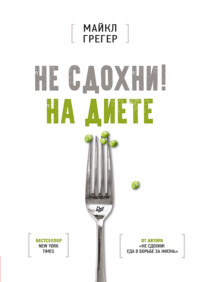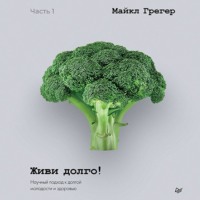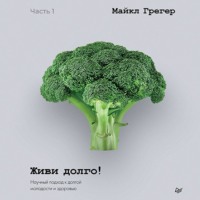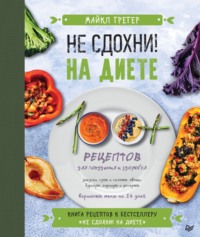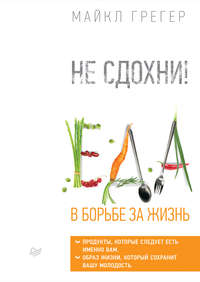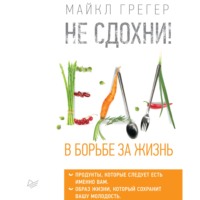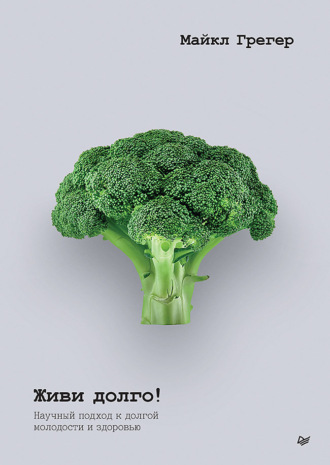
Полная версия
Живи долго! Научный подход к долгой молодости и здоровью
Если проконтролировать эти вторичные медиаторы, то значимая связь между стрессом и смертностью, по-видимому, исчезает[3123].
В оккупации
Наиболее яркими иллюстрациями подчиненной роли стресса в формировании образа жизни являются естественные эксперименты, поставленные в условиях лишений военного времени. В конце концов, что может быть более стрессовым, чем жизнь в условиях нацистской оккупации? Должно же было резко возрасти число сердечных приступов? Нет, исследования в оккупированных нацистами Норвегии, Финляндии[3124] и блокированной Швеции показали, что число инфарктов резко упало и составило лишь одну четвертую часть от прежнего уровня[3125]. Посмотрите ролик see.nf/worldwars, там я рассказываю, что происходит, когда такие продукты, как мясо, яйца и масло, выдаются в ограниченном количестве[3126] и нехватка продовольствия приводит к тому, что в рационе преобладают овощи с огорода[3127]. В связи с нацистской оккупацией Норвегии в редакционной статье The Journal of the American Medical Association («Журнала Американской медицинской ассоциации») отмечалось: «Стресс не оказывает практически никакого действия, если в рационе мало животных жиров»[3128].
Ссылки на источникиСоциальные связи
Социальные связи – один из важных атрибутов «голубой зоны», который тщательно изучается на предмет его потенциальной роли в поддержании продолжительности жизни[3129]. Например, люди, состоящие в браке, имеют более низкий уровень смертности, чем одинокие[3130]. Потеря супруга или партнера, по-видимому, повышает риск смертности как для вдовцов, так и для вдов. Однако «смерть от разбитого сердца»[3131] может быть отчасти обусловлена тем, что тяжелая утрата связана с повышенным потреблением сигарет и алкоголя[3132]. Более высокие показатели смертности характерны для тех, кто потерял супруга в результате не только смерти, но и развода. Не состоявшие в браке, по-видимому, также подвержены более высокому риску. В большинстве исследований не было зафиксировано различий по полу, однако в большинстве из них было установлено, что риск преждевременной смерти выше у одиноких мужчин, чем у одиноких женщин[3133].
Преимущество брака может быть следствием предвзятости отбора или сопутствующих факторов. Например, более здоровые люди чаще вступают в брак или остаются в браке, а высокий социально-экономический статус и здоровое поведение чаще наблюдаются среди состоящих в браке людей. Тем не менее исследования, в которых предпринимались попытки контролировать эти факторы, продолжают находить преимущества брака[3134].
Социальная изоляция – объективный фактор социальной разобщенности[3135] – и субъективное чувство одиночества[3136] связаны с повышенным риском преждевременной смерти. Однако этот эффект снижается, если принять во внимание побочные факторы[3137], связанные с чувством одиночества: употребление табака или проблемы с алкоголем[3138]. Кроме того, не очень понятно, что было раньше, курица или яйцо: возможно, не социальная изоляция приводила к ухудшению здоровья, а плохое состояние здоровья – к изоляции[3139].
Кто кого спасает?
А хвостатые социальные контакты считаются? Более чем в двух третях американских семей, включая мою, есть домашние животные[3140]. В работе, опубликованной в престижном журнале Science под названием «Положительная петля окситоцина и коэволюция связей между человеком и собакой», исследователи рассказали, что поглаживание собаки и обмен взглядами с ней приводит к выделению окситоцина в мозге и человека, и собаки – того же «гормона любви», который привязывает кормящих матерей к их младенцам[3141].
Читая о возможных механизмах повышения выживаемости после инфаркта, я наткнулся на статью о «глубокой» реакции сердечно-сосудистой системы на поглаживание собак или лошадей. «Эта реакция обычно выражается в значительном снижении частоты сердечных сокращений и артериального давления». Я вполне мог это понять. Но следующее предложение заставило меня разочароваться: «К сожалению, у нас нет информации о физиологической реакции человека, который гладит собаку»[3142]. Исследователи говорили о частоте сердечных сокращений и артериальном давлении животных!
К моему удивлению, исследования влияния животных-компаньонов на здоровье человека, как говорится в одном из обзоров, представляют собой «мешанину противоречивых результатов»[3143]. Все подробности смотрите в моем видеоролике see.nf/pets. Вы можете себе представить, насколько обсервационные исследования изобилуют потенциальными факторами[3144] и обратной причинно-следственной связью[3145], а единственное интервенционное исследование, в котором действительно проверялось влияние животных-компаньонов, касалось «домашних насекомых»[3146]. Тем не менее не помешает прислушаться к совету из статьи в медицинском журнале, опубликованной в 1925 году: «Лучший рецепт, который можно выписать для прогулки, – это взять с собой собаку, трость и друга»[3147].
Часть III. Сохранение функций
Сохранение костей
Остеопороз (термин буквально означает «пористая кость») характеризуется снижением плотности костной ткани, чрезмерной ее потерей или сочетанием обоих факторов, что приводит к хрупкости костей[3148] и является причиной миллионов переломов в год[3149]. В целом, по оценкам специалистов, этим заболеванием страдают 200 миллионов человек во всем мире[3150].
Минеральная плотность костной ткани используется как надежный и последовательный предиктор остеопоротических переломов[3151]. Хотя норма плотности костной ткани для постановки диагноза остеопороза является произвольной[3152], сегодня установлено, что это заболевание может поражать примерно одну из десяти женщин в возрасте 60 лет, две из десяти – в возрасте 70 лет, четыре из десяти – в возрасте 80 лет и шесть или семь из десяти – в возрасте 90 лет. Обычно считается, что остеопорозом страдают в основном женщины, однако одна треть переломов бедра приходится на мужчин[3153]. Например, для 50-летних белых женщин и мужчин риск остеопоротических переломов в течение жизни составляет 40 % и 13 % соответственно[3154].
Однако радует то, что остеопороз не неизбежен. По данным исследования, проведенного в крупнейшем в мире регистре близнецов, менее 30 % риска остеопоротических переломов передается по наследству. Исследователи пришли к выводу, что «усилия по профилактике переломов в пожилом возрасте должны быть сосредоточены на паттернах образа жизни»[3155]. Существуют огромные различия в частоте переломов бедра в разных странах мира: цифры различаются в десятки и даже в сотни раз, что позволяет предположить, что чрезмерная потеря костной массы не является неизбежным следствием старения[3156].
Рабочая группа по профилактике заболеваний США (The U.S. Preventive Services Task Force, USPSTF), независимая научная комиссия, разрабатывающая научно обоснованные рекомендации по клинической профилактике, рекомендует проводить скрининг на остеопороз (например, DXA-сканирование минеральной плотности костной ткани, также называемое DEXA) всем женщинам, начиная с 65 лет, а в постменопаузе – даже раньше, особенно тем, у кого существует повышенный риск развития этого заболевания: например, с низкой массой тела, имеющим в анамнезе перелом бедра у родителей, курящим, чрезмерно употребляющим алкоголь[3157]. Что делать, если вам поставлен такой диагноз? И, что еще более важно, что нужно делать, чтобы диагноз не был поставлен? Прежде чем мы рассмотрим средства, предлагаемые для лечения остеопороза, давайте обсудим, что может вызывать это заболевание.
Блокаторы кислот могут быть вредны для костей
Препараты, блокирующие кислоту желудка, или ингибиторы протонного насоса, являются одними из самых популярных лекарств в мире, приносящими миллиарды долларов в год[3158]. Но за них приходится платить – и не только в кассу производителей. Как я описываю в ролике see.nf/ppi, десятки исследований, в которых приняли участие более двух миллионов человек, свидетельствуют о более высокой частоте переломов бедра среди принимающих препараты в любых дозах, как длительно, так и краткосрочно[3159]. Этот класс препаратов обладает повышенным риском развития побочных эффектов, таких как пневмония[3160], [3161], кишечные инфекции, почечная недостаточность[3162], [3163], рак желудка[3164], сердечно-сосудистые заболевания[3165] и преждевременная смерть[3166], Более того, тому, кто начал принимать эти препараты, бывает трудно остановиться из-за симптомов синдрома отмены[3167]. И как я рассказываю в видеоролике, ирония заключается в том, что большинство людей, принимающих эти препараты, вообще не должны их принимать[3168].
Чтобы справиться с кислотным рефлюксом без лекарств, рекомендуется снизить вес[3169], отказаться от курения[3170], избегать жирной пищи[3171], не есть в течение двух-трех часов после утреннего пробуждения[3172], увеличить потребление клетчатки[3173] и в целом придерживаться более растительной диеты[3174].
Кости и суставы
Уже несколько десятилетий мы знаем, что курение сигарет может оказывать серьезное влияние на здоровье костей, увеличивая риск перелома бедра в течение жизни примерно в 2 раза[3175]. Оказывается, оно также ухудшает заживление костей[3176] настолько, что хирурги задаются вопросом, не следует ли сформировать специальные протоколы лечения курильщиков, поскольку частота осложнений при заживлении ран и костей у них так высока[3177]. А как с теми, кто курит коноплю[3178]? Об этом я рассказываю на see.nf/joints. Итог: употребление марихуаны, по-видимому, является независимым предиктором хрупкости костей[3179].
Насколько эффективны препараты для лечения остеопороза?
Лекарственная терапия остеопороза рекомендуется мужчинам и женщинам в постменопаузе – в возрасте 50 лет и старше, имеющим в анамнезе переломы бедра или позвонков (позвоночника), с Т-критерием ≤ –2,5, а также тем, кто не попадает в эту группу, но рискует – с вероятностью в 20 % и более – получить серьезный остеопоротический перелом в течение последующего десятилетия, в частности перелом бедра[3180].
T-критерий – это показатель плотности костей по сравнению со среднестатистической 30-летней белой женщиной. Поскольку с возрастом мы теряем костную ткань, остеопороз может быть диагностирован даже при абсолютно нормальной для нашего возраста плотности костей. Однако то, что плотность костной ткани может быть нормальной, не означает, что она обязательно оптимальна. Это одна из причин, по которой Национальный фонд остеопороза (National Osteoporosis Foundation) разработал рекомендации по медикаментозному лечению этого заболевания. Другая причина, возможно, заключается в том, что он получает значительное финансирование от фармацевтических компаний, которые извлекают буквально миллиарды долларов прибыли из лекарств от остеопороза[3181]. Что же говорит наука? Я привожу цифры на see.nf/drugefficacy. Опросы показывают, что большинство людей не стали бы принимать препараты от остеопороза, если бы знали правду[3182], но решать вам.
Насколько безопасны препараты для лечения остеопороза?
Большинство людей, которым назначаются эти препараты, прекращают их прием в течение года, и не только из-за недостаточной эффективности[3183]. Остеонекроз челюсти и атипичные переломы бедренной кости – два редких, но серьезных побочных эффекта. Их выявление привело к более чем 50 %-ному снижению использования этих препаратов[3184]. Об этом говорится в статье NewYork Times: «Сообщения о том, что препараты вызывают гниение челюстных костей и раскалывание соседних костей, настолько потрясли многих пациентов с остеопорозом, что они говорят, что лучше обойдутся без лечения»[3185]. В ролике see.nf/drugsafety я рассматриваю, насколько вероятны такие случаи и что можно сделать для снижения риска.
Насколько безопасны и эффективны кальциевые добавки?
Существуют ли добавки, которые могут помочь снизить риск развития остеопороза? В главе «Сохранение мышц» я рассказываю о том, как креатин способен улучшать состояние мышц у пожилых людей, что потенциально может привести к снижению риска падений, однако при проверке практикой этого позитивного эффекта не наблюдалось[3186]. Подавляющее большинство исследований не выявило никакой пользы от креатина для здоровья костей[3187]. А как насчет добавок кальция и витамина D?
Всего за десяток лет экспертные комиссии перешли от рекомендаций принимать кальций всем для профилактики остеопороза[3188] к рекомендациям «обойтись без добавок»[3189], и они до сих пор сохраняются для большинства людей[3190]. Я подробно рассказываю о том, что произошло, в своем видеоролике see.nf/calciumsafety. Смысл в том, что добавки кальция, по-видимому, усиливают риск инфарктов и инсультов[3191], поскольку приводят к быстрому повышению и длительному сохранению неестественно высокого уровня кальция в крови[3192], что чрезмерно увеличивает ее вязкость[3193].
Инфаркт или инсульт может быть разрушительным, но и перелом бедра тоже. Насколько эффективны добавки кальция для профилактики переломов бедра? Потребление кальция в целом, по-видимому, никак не связано с риском переломов бедра[3194]. Более того, рандомизированные контролируемые исследования показывают, что риск переломов бедра при приеме добавок кальция на 64 % выше, чем при приеме плацебо. В своем видеоролике see.nf/calciumeffectiveness я рассказываю о том, как мы вообще пришли к мысли, что прием добавок кальция может помочь нашим костям. В принципе, данные свидетельствуют о том, что потребление кальция с пищей – это не то, о чем стоит беспокоиться большинству людей[3195], учитывая способность нашего организма при снижении потребления пищи усваивать больше и выделять меньше[3196]. Однако не будем заходить слишком далеко. Если снизить потребление кальция до нескольких сотен миллиграммов в день, то потеря костной ткани может значительно ускориться[3197].
Оптимальная дозировка витамина D для профилактики падений
Слишком большое количество витамина D тоже может быть вредным. В своем видеоролике see.nf/vitamindfalls я рассказываю об исследованиях, показывающих, что мегадозы, например разовая доза в 500 000 МЕ раз в год, могут увеличить риск падений по сравнению с плацебо[3198]. Увеличение числа падений также наблюдалось после приема 100 000[3199] или 60 000 МЕ раз в месяц[3200]. В ходе годичного рандомизированного двойного слепого плацебо-контролируемого исследования семи различных доз витамина D было установлено, что пожилые женщины, принимавшие средние дозы (1600, 2400 или 3200 МЕ в день), значительно реже падали, чем те, кто принимал меньшие (400 или 800 МЕ в день) или большие (4000 или 4800 МЕ в день) дозы[3201]. Кроме того, прием 4000 или 10 000 МЕ в день в течение 3 лет снижал минеральную плотность костной ткани[3202], особенно у женщин[3203], поэтому не переусердствуйте.
Действительно ли молоко приносит пользу организму?
Какие продукты могут помочь нашим костям? На ум приходит молоко, но похоже, это всего лишь пустая маркетинговая уловка. Рандомизированных контролируемых исследований не проводилось[3204], но большинство метаанализов потребления молочных продуктов и популяционных исследований переломов бедра не выявили никаких защитных свойств[3205]. Более того, доктор Уолтер Уиллетт, бывший заведующий кафедрой питания Гарвардского университета, высказал предположение, что молоко может даже способствовать высокой частоте переломов бедра – судя по данным, полученным в странах с наибольшим потреблением молока[3206]. Именно эта загадка вдохновила шведскую исследовательскую группу на проведение комплекса исследований с участием 100 000 мужчин и женщин, за которыми велось наблюдение в течение 20 лет[3207]. Оказалось, что потребление молока повышает частоту переломов костей и бедер, а также сокращает продолжительность жизни людей[3208].
Как показано в моем видео see.nf/milkbones, виновником этого является галактоза – продукт распада молочного сахара лактозы. Галактоза используется учеными для того, чтобы вызывать преждевременное старение у лабораторных животных. В одном из таких исследований после введения галактозы «у животных с искусственно укороченной продолжительностью жизни были выявлены нейродегенерация, умственная отсталость и когнитивная дисфункция… а также снижение иммунных реакций и репродуктивной способности»[3209]. А ведь для этого нужно совсем немного – всего один-два стакана молока в день в человеческом эквиваленте[3210]. Но люди – не лабораторные животные. Например, мы уже почти 100 лет знаем, что можно вызвать катаракту у крыс, если кормить их большим количеством лактозы или галактозы[3211]. Однако эпидемиологические данные о том, вызывает ли молочная пища подобные нарушения у людей, неоднозначны[3212].
После того как крупнейшее на тот момент исследование потребления молока и показало повышение смертности, гарвардские ученые организовали вдвое более масштабное исследование, чтобы выяснить, не были ли шведские результаты просто случайностью. Наблюдая за более чем 200 000 мужчин и женщин в течение трех десятилетий, в 2019 году они подтвердили: дело плохо. Жизнь тех, кто потреблял больше молочных продуктов, была значительно короче[3213]. Каждая дополнительная половина порции обычного молока в день на 9 % увеличивала риск смерти от сердечно-сосудистых заболеваний, на 11 % – риск смерти от рака и риск смерти от всех причин, вместе взятых. Более подробная информация представлена в ролике see.nf/milkupdate.
Влиятельные правозащитные организации, такие как Национальный фонд по борьбе с остеопорозом США (U.S. National Osteoporosis Foundation) и Международный фонд по борьбе с остеопорозом в Европе (European-based International Osteoporosis Foundation), продолжают пропагандировать молочные продукты и лекарства и добавки с кальцием. Возможно, их объективность страдает под влиянием их коммерческих спонсоров, в число которых входят компании, продающие (как вы уже догадались) молочные продукты, лекарства и добавки[3214]. Конфликт интересов вызывает обоснованное беспокойство. Большинство последних обзоров, посвященных молочным продуктам и остеопорозу, опубликованных в англоязычной медицинской литературе, были написаны людьми, связанными с молочной промышленностью[3215]. Основным обоснованием для включения молочных продуктов в федеральные рекомендации по питанию являются предполагаемые преимущества для костной ткани, которые не подтверждаются имеющимися научными данными[3216].
Что, если бы диетические рекомендации разрабатывались без коммерческого влияния? Как я уже упоминал, недавно Канада при составлении своих новых диетических рекомендаций решила исключить отчеты, подготовленные промышленными предприятиями, и придерживаться научных данных. Среди основных изменений – новый акцент на потребление растительной пищи, а также исключение группы молочных продуктов[3217].
Кислотно-щелочной баланс и костная ткань
На протяжении большей части прошлого века в диетологии преобладала теория, согласно которой употребление кислотообразующих продуктов, таких как мясо, по сути, подвергает нас риску того, что наши кости вытекут в унитаз[3218]. Однако, как я рассказываю в своем видеоролике see.nf/acidbone, мы узнали, что большая часть дополнительного кальция, который люди теряют с мочой после приема богатой белками пищи, формировалась в организме в результате повышенного усвоения кальция, и кости кальция не лишались[3219]. Итак, если наш организм не использует наши кости для буферизации кислоты, образующейся в результате питания, то как он нейтрализует эту кислоту? Как я объясняю на с. 457, ответ, возможно, кроется в мышцах. (Почки могут буферизовать кислоту с помощью щелочи, которую они производят из продукта распада мышц – глютамина[3220].)
Однако при достаточно высокой кислотной нагрузке могут пострадать и кости. К сожалению, переломы костей – это побочный эффект, который в непропорционально большой степени поражает детей с трудноизлечимой эпилепсией, сидящих на кетогенной диете[3221]. Даже несколько недель кетодиеты могут оказать негативное влияние на маркеры ремоделирования костной ткани[3222]. Такие диеты вызывают постоянную потерю костной массы в позвоночнике[3223]: считается, что это связано с тем, что кетоны сами по себе являются кислотой[3224] и могут приводить к легкому метаболическому ацидозу[3225]. Причиной также могут быть насыщенные жиры. Преобладающий насыщенный жир – пальмитиновая кислота – в опытах в чашке Петри оказывается токсичным для клеток, строящих кости[3226]. В целом потребление насыщенных жиров достоверно связано с повышенным риском перелома бедра[3227].
С возрастом pH крови снижается до более низкого (более кислого) уровня, что, возможно, частично объясняется снижением способности почек выводить кислоту [3228]. Исследования in vitro показывают, что такое снижение pH может приводить к активации клеток, разрушающих костную ткань, а также к ингибированию костеобразующих клеток[3229]. Это может объяснить, почему, когда исследователи исключили из рациона щелочеобразующие продукты (овощи и фрукты), маркер формирования костной ткани (специфическая для костной ткани щелочная фосфатаза) значительно снизился, а маркер резорбции костной ткани (карбокситерминальный телопептид, связанный с поперечными сшивками) резко вырос, и наоборот, оба показателя заметно улучшились, когда они добавили в ежедневный рацион участников шесть чашек овощей и фруктов[3230].
Чем больше у людей в возрасте 65 лет и старше расчетное соотношение между кислотообразующими и щелочеобразующими продуктами, тем выше риск перелома бедра[3231]. (Чтобы узнать, какие продукты к каким относятся, см. рисунок на с. 459.) Для доказательства причинно-следственных связей были проведены двухлетние рандомизированные двойные слепые плацебо-контролируемые исследования, в которых три порции фруктов и овощей[3232] или эквивалент шести не дали эффекта, но девять ежедневных порций фруктов и овощей[3233] с щелочеобразующим соединением (цитратом калия) успешно увеличили объем и плотность костной ткани[3234]. Это свидетельствует о том, что буферизация кислотной нагрузки типичной западной диеты с помощью достаточного количества фруктов и овощей может помочь предотвратить потерю костной массы.
Чернослив для скелета
Воспаление и окислительный стресс также могут играть определенную роль в развитии остеопороза. Употребление провоспалительных продуктов[3235] и повышение уровня маркеров воспаления в крови, таких как С-реактивный белок, ассоциируется с остеопоротическими переломами[3236]. А у женщин в постменопаузе с остеопорозом, как правило, больше признаков окислительного повреждения и меньше антиоксидантов в крови[3237]. Это еще две причины, по которым активное потребление овощей и фруктов снижает риск переломов[3238]. Третья – витамин С. Употребление продуктов, богатых витамином С, также уменьшает риск потери костной массы, остеопороза и перелома бедра[3239]: на 5 % на каждые 50 мг витамина С в день – столько примерно содержится в одном апельсине[3240]. А какие фрукты и овощи особенно полезны?
В результате кормления крыс более чем пятьюдесятью различными продуктами выяснилось, что лучше всего кости сохраняет чернослив, а среди овощей лидирует лук[3241]. А как обстоят дела у людей? В ролике see.nf/prunes я рассматриваю имеющиеся данные. Можно сказать, что пять-шесть плодов чернослива в день могут помочь сохранить плотность костей[3242].
Плакать горючими слезами
И что насчет лука? В видео see.nf/onionstomatoes я рассматриваю как доклинические, так и клинические данные. В принципе, лук может приводить к улучшению показателей маркера потери костной массы у людей[3243], но исследование длилось недостаточно долго, чтобы понять, приносит ли это ощутимую пользу для костей. Однако клинические исследования овощей дали положительный результат.
Соус
В этом же ролике (see.nf/onionstomatoes) я рассматриваю все исследования томатного сока[3244] и соуса[3245], а также диету «Ярмарка в Скарборо» (в нее входят чернослив, лук, помидоры и травы, полезные для костей: петрушка, шалфей, розмарин и тимьян, которые перечислялись в одноименной английской народной балладе, ставшей хитом в исполнении Саймона и Гарфункеля)[3246]. Советую, не мудрствуя лукаво, просто уплетать за обе щеки фрукты и овощи в любом виде.







